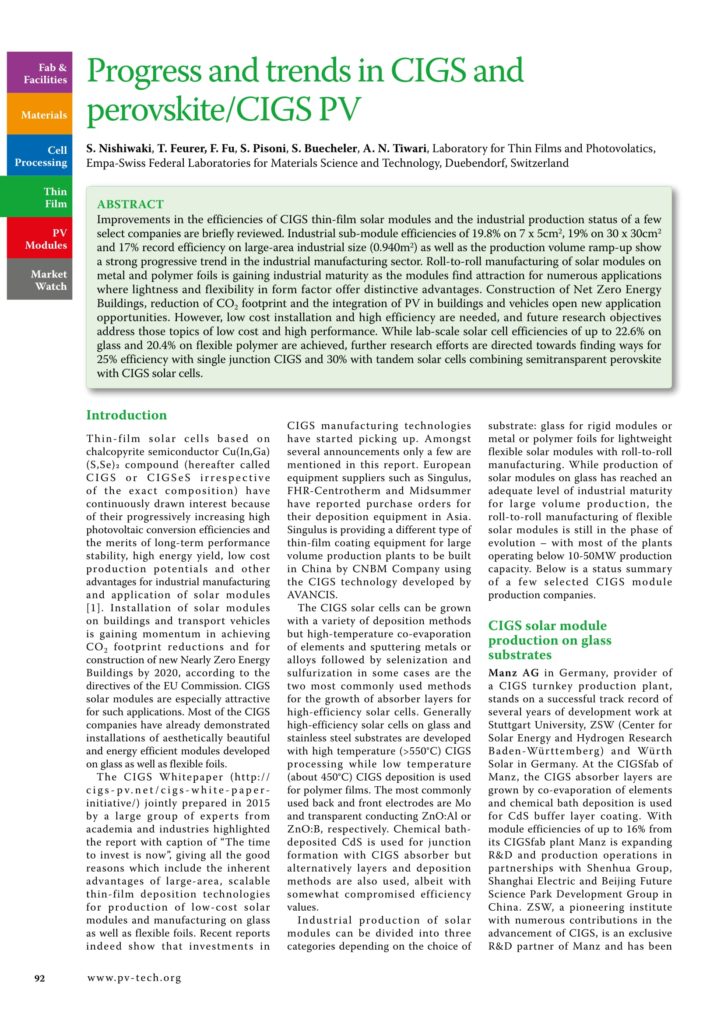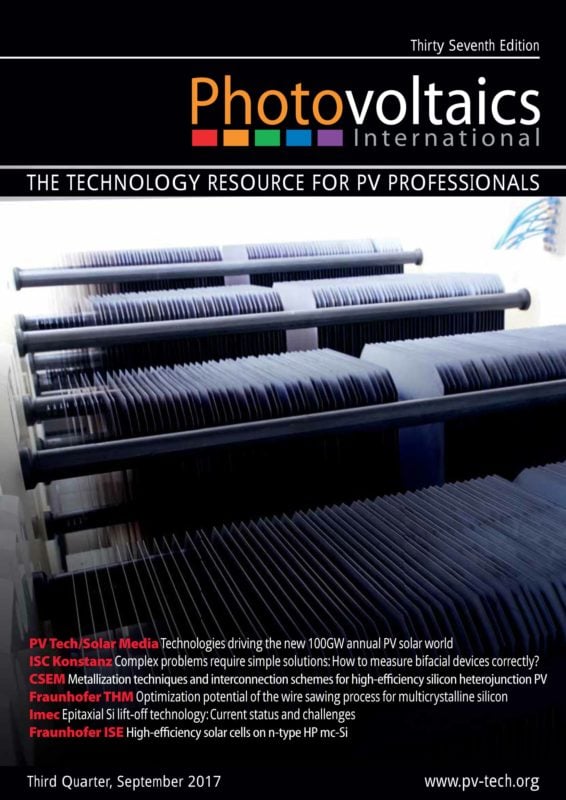By Dr. Shiro Nishiwaki, received his Ph.D degree in engineering in 1996 from the Hokkaido University, Sapporo, Japan. Prior to joining the Laboratory for Thin Films and Photovoltaics at Empa in 2008 he worked at Matsushita Electric Co. Ltd., Advanced Technology Research Laboratories, Kyoto, Japan (1997 - 2000), Optoelectronics Division of Electrotechnical Laboratory (present name: National Institute of Advanced Industrial Science and Technology (AIST), Ibaraki, Japan (2000), Hahn- Meitner-Institute, Abt SE2, Berlin, Germany (2000 - 2004), Institute of Energy Conversion, Newark, USA (2004 – Dec. 31, 2007). His; Thomas Feurer, received his master degree in physics from the Swiss Federal Institute of Technology (ETH) Zurich in 2014. He started his Ph.D at the Laboratory for Thin Films and Photovoltaics at Empa subsequently. His current research is focused on low bandgap CIGS solar cells and tandem devices with perovskite top cells.; Fan Fu, received his master degree in materials science from Wuhan University of Technology (China) in 2013.; Stefano Pisoni, received his master degree in 2015 from the Polytechnic of Milan with master thesis project at University of Oxford. He is working at the Laboratory for Thin Films and Photovoltaics for his doctoral thesis.; Dr. Stephan Buecheler, studied physics at ETH Zurich and received his diploma in 2007.; Prof. Dr. Ayodhya N. Tiwari, received his M.Sc. from the University of Roorkee, India in 1981, and his Ph.D. from the Indian Institute of Technology (IIT) Delhi in 1986.
Thin-film solar cells based on chalcopyrite semiconductor Cu(In,Ga) (S,Se)2 compound (hereafter called CIGS or CIGSeS irrespective of the exact composition) have continuously drawn interest because of their progressively increasing high photovoltaic conversion efficiencies and the merits of long-term performance stability, high energy yield, low cost production potentials and other advantages for industrial manufacturing and application of solar.


